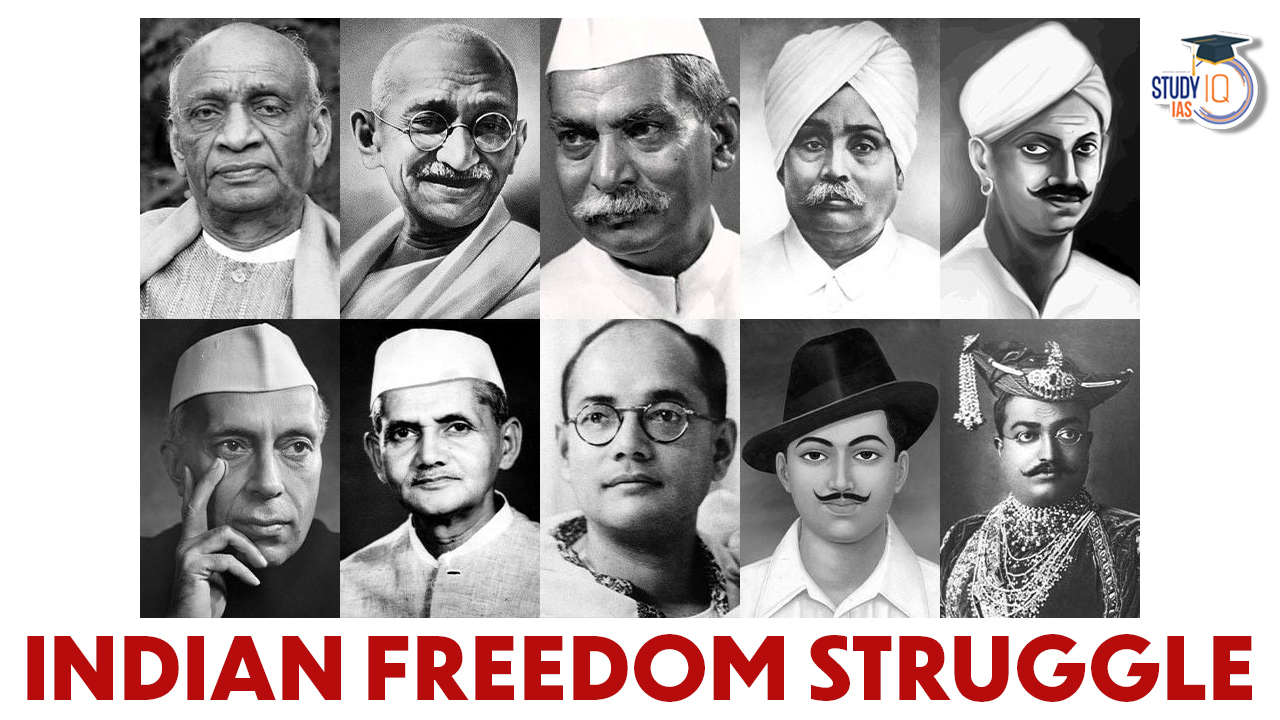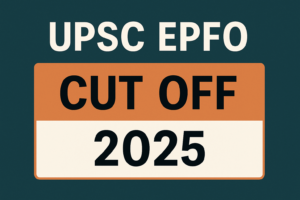The Indian Freedom Struggle is a monumental chapter in the history of India, marking the nation’s relentless fight against British colonial rule. Spanning over a century, this struggle saw the rise of several leaders, ideologies, movements, and events that ultimately led to India’s independence on August 15, 1947. For UPSC aspirants, understanding the intricacies of this struggle is crucial, as it not only shaped modern India but also provides key insights into the socio-political dynamics of the time.
List of Indian Freedom Struggle (1857-1942)
In 1857, the first war for Indian independence was fought. The Indian National Congress afterwards attempted to continue the freedom-related momentum. Numerous extremist leaders appeared. There were several leaders of the revolt. The father of the nation, Mahatma Gandhi, was crucial to the fight for Indian independence.
| Year |
Indian Freedom Struggle |
Significance |
| 1857 |
Revolt of 1857 |
Sepoy Munity in Meerut spread to Delhi, Agra, Kanpur, and Lucknow |
| 1905-1911 |
Swadeshi Movement |
Partition of Bengal by Lord Curzon |
| 1914-1917 |
Gadar Movement |
Komagata Maru Incident |
| 1916-1918 |
Home Rule Movement |
Bal Gangadhar Tikal Launched the movement with Annie Besant |
| 1917 |
Champaran Satyagraha |
First non-violent protest in India by Mahatma Gandhi |
| 1919 |
Rowlatt Satyagrah |
| 1920 |
Khilafat and Non-Cooperation Movement |
First Mass Movement led by Mahatma Gandhi |
| 1930 |
Civil Disobedience Movement |
Launched to break the salt law |
| 1940 |
Individual Satyagraha |
Launched against the August Offer |
| 1942 |
Quit India Movement |
Mahatma Gandhi launched his third major movement against British Rule |
Phases of Indian Freedom Struggle
The Indian Freedom Struggle can be broadly divided into several phases, each marked by distinct strategies, movements, and key events. Understanding these phases is crucial for comprehending the evolution of India’s fight for independence.
1. The Early Resistance (1757-1857)
Key Events:
- Battle of Plassey (1757): Marked the beginning of British political dominance in India.
- Sannyasi and Fakir Rebellions (1760-1800): Early revolts in Bengal against British exploitation.
- Polygar and Pazhassi Revolts (1799-1805): Resistance by local chieftains in South India.
- Vellore Mutiny (1806): An early armed resistance by Indian soldiers against British rule.
Characteristics:
- This phase was characterized by localized resistance, revolts by displaced rulers, and early signs of discontent against British policies.
2. The First War of Independence (1857-1858)
Key Events:
- Sepoy Mutiny (1857): Often termed the First War of Indian Independence, it was a widespread, albeit uncoordinated, rebellion against British rule.
- Key Leaders: Rani Lakshmibai, Bahadur Shah Zafar, Tantia Tope, Nana Sahib, and others led the revolt.
Characteristics:
- This phase saw a collective yet regionally fragmented uprising against British authority, symbolizing the first large-scale challenge to British power. The revolt led to the end of the East India Company’s rule and the beginning of direct control by the British Crown.
3. Rise of Nationalism (1885-1905)
Key Events:
- Formation of Indian National Congress (1885): Established as a platform for dialogue and reforms, initially with moderate demands.
- Partition of Bengal (1905): Lord Curzon’s partition of Bengal ignited widespread protests and the Swadeshi Movement.
Characteristics:
- This period witnessed the birth of Indian nationalism. The educated middle class began to organize politically, leading to the establishment of the Indian National Congress (INC). The Swadeshi Movement marked the beginning of organized, peaceful protests against British policies.
4. The Extremist Phase (1905-1919)
Key Events:
- Swadeshi and Boycott Movements: In response to the Partition of Bengal, Indians boycotted British goods and promoted indigenous products.
- Formation of Revolutionary Groups: Groups like Anushilan Samiti and Ghadar Party sought independence through armed struggle.
- Lucknow Pact (1916): A significant alliance between the INC and the Muslim League, showing unity between different communities.
Characteristics:
- This phase saw the rise of more radical and militant approaches to freedom, alongside moderate constitutional methods. The period was marked by increased assertiveness and the demand for self-governance.
5. Gandhian Era (1919-1947)
Key Events:
- Non-Cooperation Movement (1920-1922): Initiated by Mahatma Gandhi, calling for the boycott of British goods, institutions, and services.
- Civil Disobedience Movement (1930-1934): Highlighted by the Salt March, it involved the refusal to obey British laws.
- Quit India Movement (1942): A mass protest demanding an end to British rule, marked by widespread arrests and violence.
Characteristics:
- The Gandhian era was dominated by Mahatma Gandhi’s principles of non-violence and civil disobedience. The struggle became more inclusive, involving various sections of society, including women and the rural masses.
6. The Final Phase (1945-1947)
Key Events:
- Cabinet Mission Plan (1946): Proposed to form an interim government and frame a constitution, leading to India’s independence.
- Mountbatten Plan (1947): Led to the partition of India and the creation of Pakistan.
- Independence (1947): India achieved independence on August 15, 1947, ending nearly two centuries of British rule.
Characteristics:
- This phase was marked by the final negotiations for independence, the tragic partition of India, and the transfer of power from British to Indian hands.
Impact of the Indian Freedom Struggle
- Formation of a National Identity: The freedom struggle fostered a sense of national identity, transcending regional, religious, and cultural differences. It united diverse communities under the common goal of independence.
- Legacy of Non-Violence: The Indian freedom struggle is unique in its emphasis on non-violent resistance, which became an inspiration for civil rights movements worldwide, including those led by Martin Luther King Jr. and Nelson Mandela.
- Constitutional Development: The struggle led to the establishment of a democratic framework in India. The leaders of the freedom movement played a pivotal role in drafting the Indian Constitution, which enshrines the values of justice, liberty, equality, and fraternity.
Conclusion
The Indian Freedom Struggle is a testament to the resilience and determination of the Indian people. It was a multi-faceted movement that involved diverse groups and ideologies, yet remained united in its goal of achieving independence. For UPSC aspirants, understanding the complexities of this struggle is essential for comprehending the broader narrative of India’s journey towards becoming a sovereign, democratic republic.
Sharing is caring!


 UPSC EPFO Result 2025 Out: EO/AO and APF...
UPSC EPFO Result 2025 Out: EO/AO and APF...
 UPSC CSE Interview Schedule 2025: Dates,...
UPSC CSE Interview Schedule 2025: Dates,...
 UPSC EPFO Cut Off 2025 (Expected): Categ...
UPSC EPFO Cut Off 2025 (Expected): Categ...

























